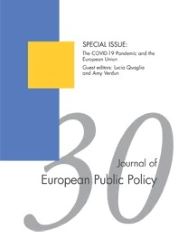Abstract
In liberal democracies, interest groups and political parties constitute the primary organizational carriers of citizens’ preferences into the decision-making of the executive and legislative institutions. While political science research has put extensive efforts into understanding both channels of representation, their combined effect for citizen representation has only recently come into focus. In particular, we lack knowledge of the ideological alignment of citizens, parties and interest groups on overarching economic Left-Right and socio-cultural dimensions. We address this gap via an original cross-national survey of interest groups, which includes the self-placement of groups on the Left-Right and Gal-Tan dimensions. The configuration of groups on these dimensions are compared with Chapel Hill Expert Survey data on parties, and information on the preferences of citizens from the European Election Studies. Our findings indicate that interest groups have the potential to supplement multidimensional gaps in representation between the political party system and citizen preferences.
Full info
Frida Boräng, Daniel Naurin and Jonathan Polk.
Making space: citizens, parties and interest groups in two ideological dimensions
Journal of European Public Policy, 2023.
DOI: 10.1080/13501763.2023.2182819
